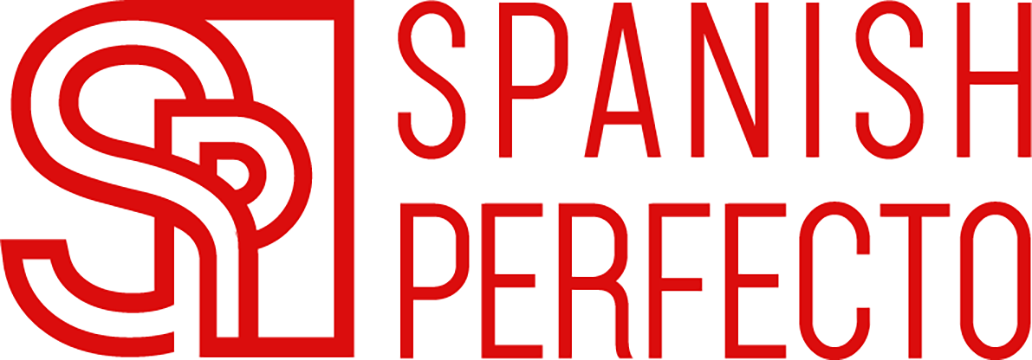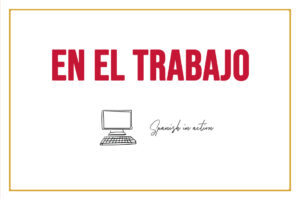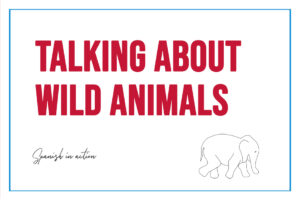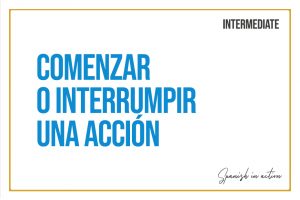We give you some starting ideas
The subjunctive creates a lot of expectations in students. They hear about it even before it is at the learning stage. Some see it as a thousand-headed monster that they will have to battle. Others look forward to it because they want to feel part of the intermediate and advanced learners. The truth is the subjunctive is a new world to correctly express what the students previously incorrectly said since they used the only way they knew: the indicative.
While before they said Quiero que vienes a mi casa el fin de semana, now they will be able to say Quiero que vengas a mi casa el fin de semana. It is also a kind of restructuring of what they already believed they had learned.
Let’s start by clarifying that the subjunctive is not tense. It is a mode. Which, like the indicative mood, has different tenses, although less. It is sometimes the first belief that we need to get out of the students’ minds.
Frequently, we find even teachers have this idea. Also, limited knowledge of what the subjunctive mode is. Therefore, limited resources to transfer a clear explanation to their students.
I will tell you here how I begin the subjunctive explanation. That lay the correct foundations from the first moment.
I ask students to open three learning ideas, or levels of learning, from the subjunctive.
The first level is a general notion: What is the subjunctive?
It is a way of seeing and expressing a not concrete and real-world as the indicative one. I like to substitute the mode idea for the world idea.
The indicative points out, as well as with the index finger, the events of the concrete world. It includes the world that the speaker imagines, thinks, and dreams. For him, it is part of his real world.
The subjunctive is the world of the subjective. It is the world of beliefs, possibilities, ideas about the uncertain future, less strong opinions, and desires.
It is not tense but a mode. We express those subjective experiences through their respective conjugations. It doesn’t matter if it is about the present, the past, or the future.
Finally, I explain the majority relationship of subjunctive dependence or subordination to the indicative. After this warning, we clarify the idea. We will be learning to use the subjunctive first in the present tense.
The second level is that of specific functions. What are the subjunctive Functions?
We will make a list of functions associated with the verbs that the student will be able to identify as the most recurrent ones that demand the use of the subjunctive. Little by little, they will understand some equivalents work in the same way.
Here you have the list of functions and the associated verbs, with perhaps some example to go landing:
Whises: to want / wish / prefer / wait / desire / need… Deseo que vengas a buscarme.
I include here the ritual wishes… Que te aproveche, que duermas bien, que te vaya bien, que te mejores….
Petition: ask / beg / request…Te ruego que me perdones.
Order: order/demand… Me han ordenado que guarde silencio.
Recommendation: recommend/advise… Les recomiendo que conozcan la ciudad de México.
Permission: allow, permit…Te dejo que vayas a la fiesta.
Prohibition: prohibit …Me han prohibido que coma azúcar.
Possibility: power … Puede que vaya.
Doubt: doubt…Dudo que terminemos a tiempo.
Opinion: belief/think/consider/suppose (only negative) … No considero un acierto que la gente no se vacune.
Assessment: to be/ seem…Es natural que esté enojada.
Feelings and sensations: like / feel/regret / rejoice/be upset/surprised…Lamento que tu padre esté enfermo.
So far everything seems to be fine. However, this is not always the case. That is why I ask you to open up to the third level of understanding of the subjunctive.
The third level is the level of structures. What structures use the subjunctive?
This third level of awareness of the use of the subjunctive is the key. By the way, it is also called by me, the level of confusion. Why? Because there are many logical questions that students ask themselves as they approach the subjunctive. It happens basically because:
1-Some proper functions of the subjunctive express in indicative or subjunctive.
2-Other structures appear to be minor functions of the subjunctive but are not functions. I will give you examples of this to explain myself better.
3-Some structures do not require the subjunctive by exception.
As you noticed, the subjunctive opinion expressions are just the negatives. There we begin to perceive that the functions are not always clear for the subjunctive or indicative use. The same thing happens with adjectives that indicate certainty: está claro que lloverá / no está claro que llueva.
Another example of this type of direction to the indicative or the subjunctive, is the probability of the expressions of possibility or doubt. When using a lo mejor the indicative form of the verb may be preferred. Quizá, tal vez, posiblemente, probablemente they probably use both but these last two are restricted by the position concerning the verb. They are indistinct, but if they are after the verb, we use only indicative.
I give you two examples of those structures that seem to be minor functions of the subjunctive.
The use of Cuando with future functions is constant: Cuando vaya a la playa me bañaré todo el día. This use is not among its functions, but it is a structure that always demands it.
Relative sentences when dealing with a non-specific or unknown subject: Quiero que traigas el libro que esté en la mesa, instead of: Quiero que traigas el libro que está en la mesa.
With this last sentence, we know that there is a specific one.
But there are functions of the subjunctive that are not fulfilled only because of another element of the sentence. For example: If the subject of the first sentence is the same as the second, the one that would require to be a subjunctive subordinate, the infinitive is used and the one is omitted. Yo quiero que tú vayas a la escuela. Yo quiero ir a la escuela.
Or the sentences of recommendation or order use the verb in the subjunctive always except in the affirmative form tú. Ven/No vengas
So for now all I want with this introduction to the subjunctive is for you to open your understanding to these three levels of information: What is the subjunctive? What are the functions of the subjunctive? What structures use the subjunctive?
And after this never try to learn all the structures and functions together, neither all the conjugations. Go little by little. Start with the present tense of the subjunctive and progress through structures.
I am more than sure that this way your logic will be more flexible and your learning easier and more effective.
Ask me questions, I will be happy to answer you.



